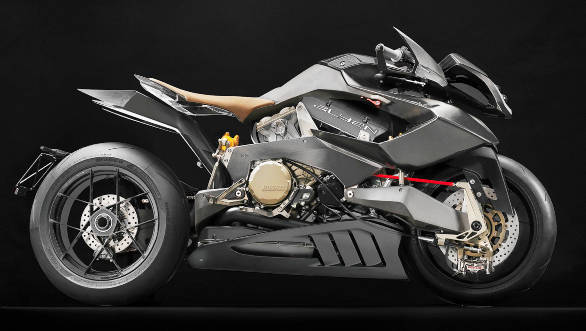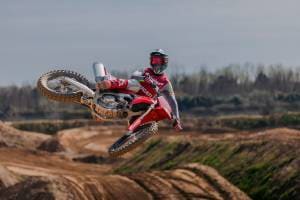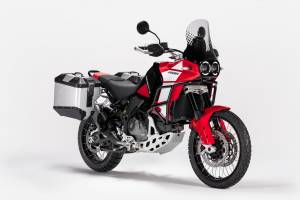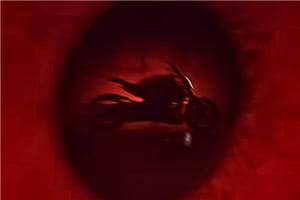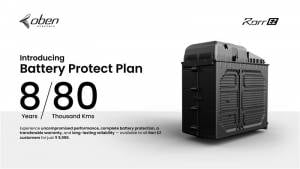Tracking the Vyrus - a bespoke motorcycle manufacturer from Italy
If the name of your company sounds extremely similar to the pandemic that has gripped the whole world, you are bound to be in news. But then this is not the Virus that you have to stay away from, it is the Vyrus that you can only dream of possessing. The Italian boutique motorcycle firm, Vyrus has unveiled the Alyen that is powered by a Ducati motor. What makes it stand apart from the other crop of superbikes is not just its unique design that seems to be inspired by the evil Decepticons but also the generous use of carbon fibre on the body and a hub-mounted steering mechanism. What should you know of this bespoke Italian motorcycle manufacturer? Read on.
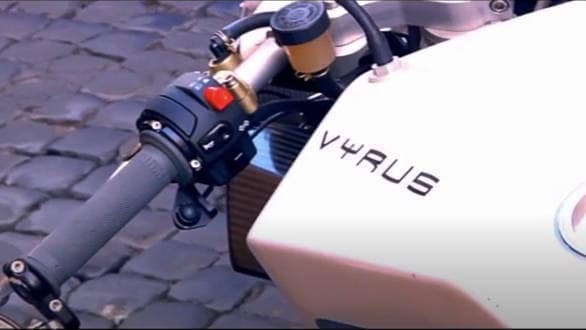
The Bimota connection
Ascanio Rodorigo, the brains behind Vyrus, was associated with Bimota Racing in the 70s where he was working as a mechanic along with the motorcycle designer and co-founder Massimo Tamburini. Due to a major setback with one of its motorcycles, the V Due, and also a big hurdle with one of the sponsors withdrawing support, Bimota went bankrupt, also putting an end to its racing programme. During this period Massimo Tamburini left the company and joined Cagiva. Since the racing programme had ended, Ascanio was shifted to the regular production side. And this didn't seem to go down well with the Italian. He left the company to form his own venture called ARP in 1985 based out of Rimini in Italy.
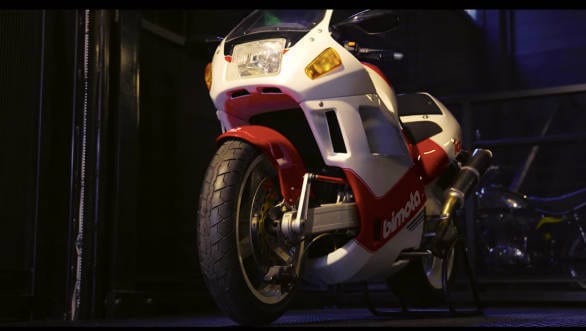 Ascanio Rodorigo's ARP offered frames and parts for both regular and race motorcycles. Most of the clients were existing Bimota motorcycles
Ascanio Rodorigo's ARP offered frames and parts for both regular and race motorcycles. Most of the clients were existing Bimota motorcycles
This small outfit was mainly into making customised frames and parts for both regular production motorcycles as well performance machines that were raced on tracks. It is said that most of the clients of ARP were actually the existing customers of Bimota motorcycles for whom tuning the chassis was extremely difficult for racing. This gave Rodorigo enough confidence to not just work on the Bimotas but also make a superior version of it. This was also encouraged by Rodorigo's friend, Matthew Casey who was at Bimota in the 90s. To be precise, this was going to be Rodorigo's version of the Tesi that Bimota had made.
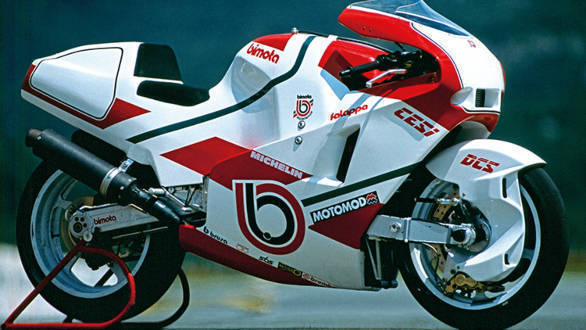 The Bimota Tesi prototype by Federico Martini was based on a Honda V4 (Image source)
The Bimota Tesi prototype by Federico Martini was based on a Honda V4 (Image source)
What's the Tesi? When Tamburini left Bimota, he was replaced by Federico Martini who made DB1 that was powered by a Ducati motor. Further, he made the first prototype of the Tesi that used a Honda V4 motor. It was called Tesi because of its central hub steering design created as a Mechanical Engineering Thesis (Tesi in Italian) by Pierluigi Marconi.
Born of the Vyrus
The ARP's team, back then, included Dervis Macrelli who had worked with Tamburini on the frame of the Bimota motorcycles. He, however, was not a full-time employee of ARP as he was working at the Cagiva Research Centre (CRC) that was founded and operated by Massimo, Pierre Terblanche and others. CRC had worked on and developed motorcycles like the MV Agusta F4 and the Ducati 916. At ARP, Rodorigo was looking after the design with help from Sam Matthews, the ex-Ducati designer who was working for Terblanche. After the finalisation of the design, it was Matthew who would convert them into CAD designs for building of the prototype.
Back then, however, technology wasn't as developed as the present age which means the making of the clay model was done by hand, referring to the drawings. The team was readying their first prototype to be showcased at the Padova Show which was one of the important two-wheeler events in Italy. One of the nights, Rodorigo was working on building the clay model with his friend Mauro at 3am, where he realised that the prototype needs to be named. For obvious reasons, the bike could not be called Tesi as that brand name was owned by Bimota. It was then that Mauro thought of the name Vyrus by explaining that their crazy passion of building a motorcycle all night long and being constantly at it is identical to the virus that affects computers. This led to the renaming of ARP to Vyrus.
The first model - Vyrus 984
Rodorigo's prototype finally took shape in the form of the Vyrus 984. This one made use of the 984cc engine from the Ducati 900SS that ARP had been successfully racing at the SuperTwin events, which also was the inspiration from where the motorcycle got its name, that is from the 984 model.
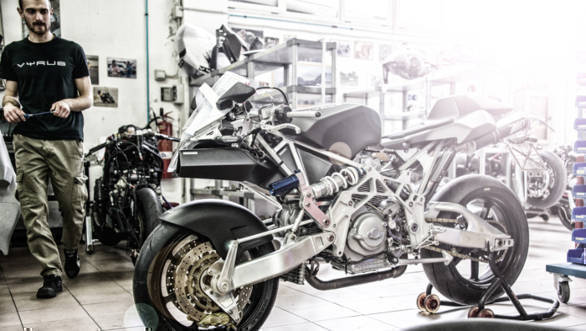
The reason behind Rodorigo choosing the Ducati motor was his confidence and knowledge of it. He wanted to focus all his efforts in designing the chassis and not worry about the engine at all. The motorcycle amassed a lot of attention as well as enquiries which did take Rodorigo by surprise. This made him believe that the Vyrus 984 prototype had to be put into production for its customers.
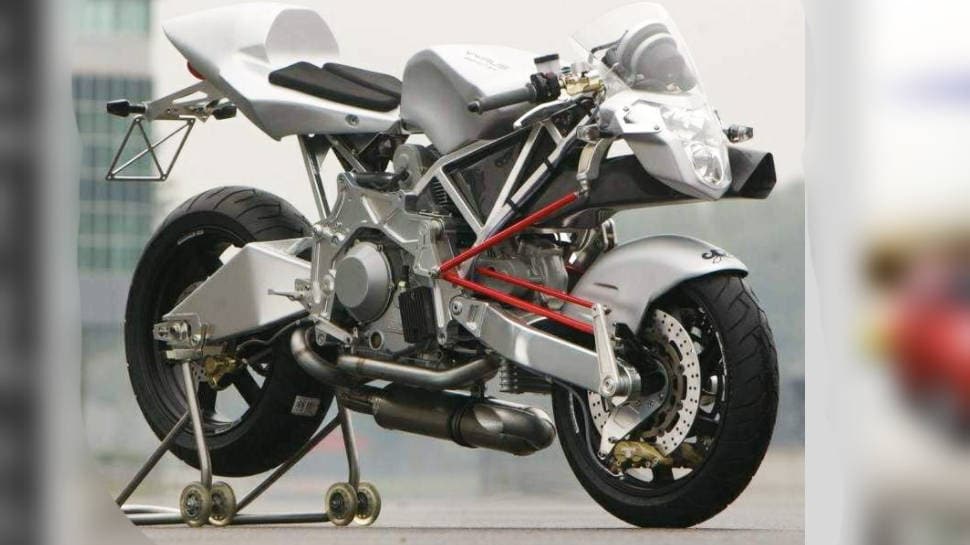
Since the company was small and Rodorigo was always into small batch production, he decided to make the same for the Vyrus 984 that was going to be hand-built. But before the motorcycle could enter production, it had to be homologated first. The engineering of the chassis and the handling was fine-tuned on a racetrack, specifically in twin-cylinder class of racing ridden by a Gianluca Villa who was the nephew of four-time racing champion, Walter. The first motorcycle was sold in 2003, which made it the lightest twin-cylinder sportsbike on sale then.
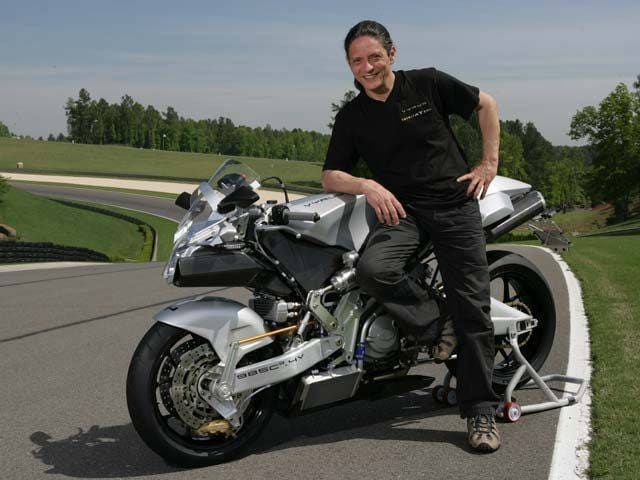 Ascanio Rodorigo with the Vyrus 985 C3 4V (Image source: Motorcyclist)
Ascanio Rodorigo with the Vyrus 985 C3 4V (Image source: Motorcyclist)
The company sold a total of 70 units in the following three years, where 25 of them were sold as rebranded Bimota 2D units. The Vyrus 984 was then followed up with an even more powerful 985 4V supersport that was powered by Ducati's 999cc Testastretta motor that put out an impressive 155PS and was launched in 2004. Rodorigo went ahead and developed more Vyrus products in the form of the 987 C3 4VV using the supercharged 1,198cc from Ducati that generated 211PS of power, above the 184PS-making 987 C3 4V. The customers who actually bought themselves the Vyrus were very few and among them was Hollywood Actor Tom Cruise. In fact, he spent USD 1,00,000 (Rs 76 lakh, excluding duty and taxes) to get himself one and also give the company tons of popularity.
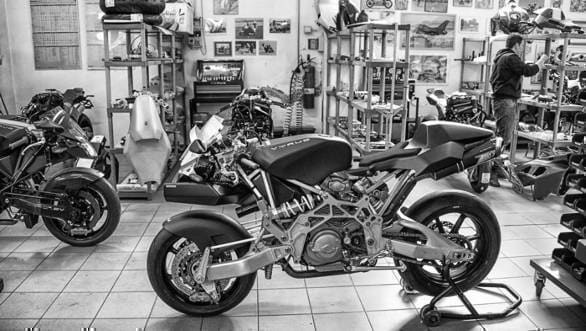
The Moto2 Trial
Back in 2011, Rodorigo's love for performance machines seems to have been the inspiration behind the making of the 986 M2. This one was a special motorcycle as it was unlike the Vyrus or Bimota bikes. The 599cc inline-four motorcycle weighed a mere 145kg.
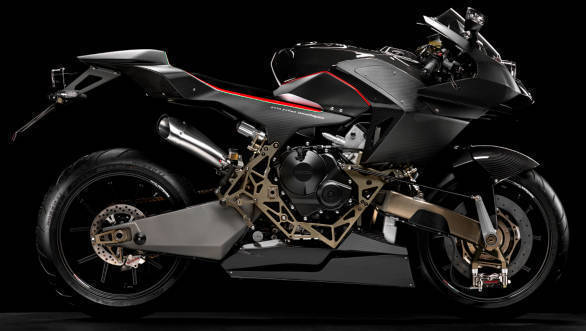
It was essentially a kit for the Moto2 World Championships, built on engines from the Honda CBR600RR. What made it different from the Bimota and Tesi bikes is that it used hydraulic pistons instead of the mechanical steering and linkages used in the central hub steering of the motorcycle. The design was completely new as it used the engine as the stress member. Also, the extensive carbon-fibre panels were designed by computer graphics designer Yutaka Igarashi and Sam Matthews.
Present-day Vyrus motorcycles
Take a look at the official Vyrus website and you can see that there are five motorcycles that the bespoke Italian motorcycle manufacturer offers. The 984 C3 2V that uses a 1,078cc twin producing 100PS and weighing 158kg while the 987 C3 4V makes use of a 1,198.4cc twin mated to a slipper clutch producing 165PS weighing 159kg dry. The 985 C3 4V powered by a 999cc twin produces 155PS and weighs 157kg whereas the Alyen 988 makes an impressive 208PS from a 1,285cc L-twin engine.
